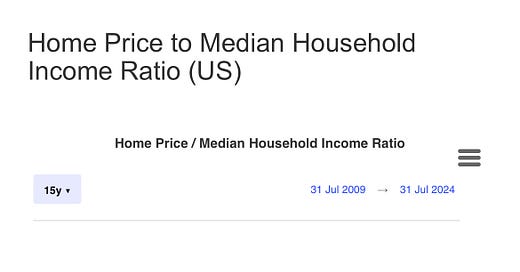More Housing = Not Much Red Shift
The two blue states that saw the least Trumpward shift last week are Washington and Colorado. Washington got bluer and Colorado barely budged to the right.
I was playing with some data and discovered that they also happen to be the two most productive blue states in the country when it came to housing last year.
What should we make of this?
While it is not the whole story, nor is it a story without holes, it is evocative. The narrative that demographics are driving the difference between states seems incomplete, and this little nugget may offer us a clue as to why.
Demographics as Destiny?
First, I’ll readily concede that it is quite clear that we are seeing race and class realignments in the electorate, and that demographic composition will thus be pretty predictive of how a state shifted or did not shift toward Trump.
After all, the vote share of white people and people with bachelor’s degrees did not jump toward Trump this year. Since both Washington and Colorado are unusually white and well educated, this should explain their performance.
But when it comes to high performing states, demographics do not appear to tell the whole story.
For example, Massachusetts is whiter and much more educated than Washington. It is also more educated than Colorado. But it shifted a stunning eight points right!
Vermont is far whiter than Colorado and Washington, and also more educated than Washington. But it still moved three points toward MAGA.
Oregon is only a bit less white than Colorado and just less educated than Washington. And yet it found its way to a four point swing.
Rhode Island is whiter than Washington and comparably educated. It moved five points right.
Demographic shifts surely do not tell the whole story.
Ya, Sure
Minnesota’s situation is similar to Washington and Colorado. They did fourth best when it came to avoiding the red shift and have the third best housing production. Minnesota is whiter than, and comparably educated to, Washington, but its vote share underperformed both Washington and Colorado. Still, fourth best is pretty good.
Of course, Minnesota brings in confounding factors that might have bolstered their performance. Their governor was the VP candidate. The state was sort of considered a swing state, which means the campaign efforts may have boosted Democratic results, as it did in other swing states. But it got way less campaign advertising this year. On balance, I suspect its strong performance is mostly not campaign related, but I don’t have definitive proof.
It is striking that three of the four top performers were the top three in housing and that there were plenty of states that were demographically comparable (or even more tilted) and still managed to perform worse.
Note, the only top performer that housing production didn’t predict was Maine. Maine is, of course, an outlier in many senses. Its tiny population means it is unlikely to be representative, and its extremely white and fairly well educated populace are reason enough to explain their more modest shift toward Trump. Maine’s lower housing production numbers are also more likely to reflect a lack of demand.
Klugey Caveats of Course
To be clear, my analysis here only extends to housing production last year–which is not the same thing as affordability. But it does give us a directional sense of pricing pressure in each state in the last year, which should impact people’s perception of inflationary-related quality of life.
I will also acknowledge that higher production rates may simply mean more demand, and these numbers may really reflect migration and desirability and opportunity and that’s why those places performed well. It could be that the ability to produce housing just correlates with some other areas of (comparative) excellence for these three states, as it relates to delivering for their people. It could be that there are totally unrelated causal explanations! And I should note that this analysis doesn’t yet account for the behavior of the electorate in blue cities that sit in red states.
There is clearly more investigation to do here.
The Housing Election
But one way or another, I have an increasingly strong hunch that housing played a huge part in this election. Inflation drove a global backlash to incumbent governments and that propelled Trump into office. Housing is most people’s biggest line item, and home price inflation has been pretty nuts.
Clumsy housing policy in blue states has made it worse, leaving mud on the face of a party that claims to care about hard working families. And the biggest shifts to Trump happened in expensive metros.
Mind you, the Colorado, Washington and Minnesota housing production numbers were by no means good. Nor is Washington affordable or doing a good job. The national bar among blue states just happens to be exceedingly terrible.
The housing shortage is already understood to be a pricing, opportunity, inequality, homelessness and climate crisis. Now it is a political crisis too.
We have to fix this.




